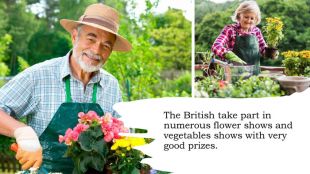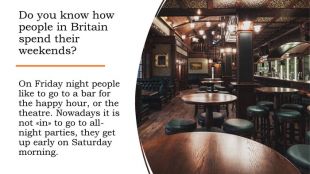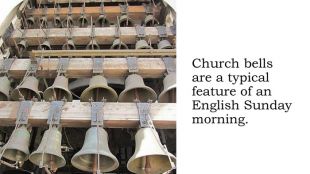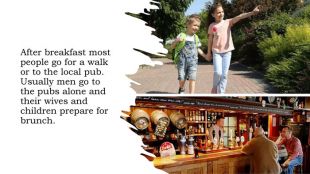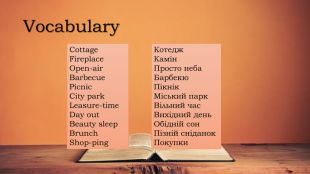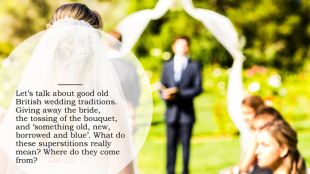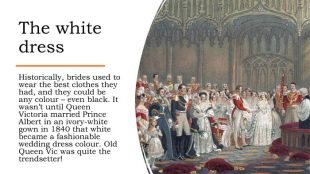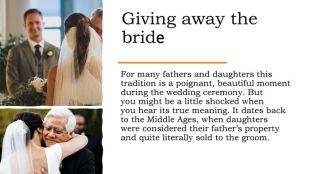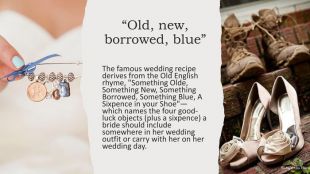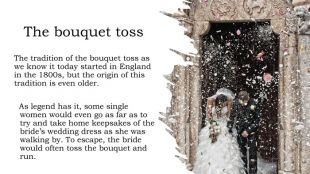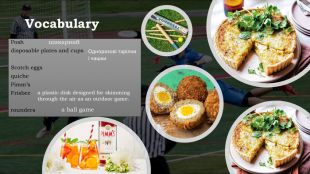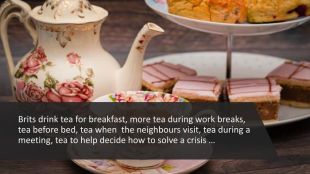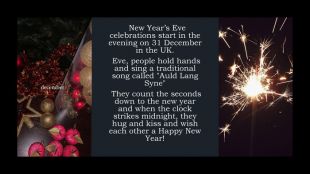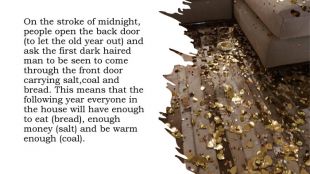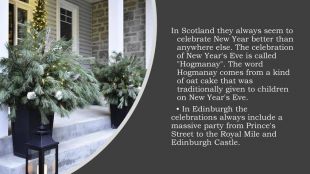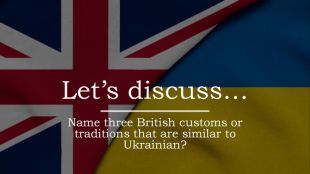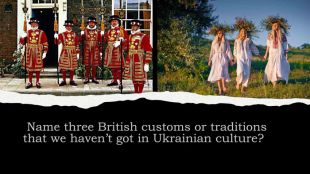Презентація з англійської мови "All about British Life and Culture"













































British customs and traditions are famous all over the world. Our British Life and Culture blog will tell you some of the fascinating facts and information about this beautiful country When people think of Britain they often think of people drinking tea, eating fish and chips and wearing bowler hats, but there is more to Britain than just those things.
There are no strict rules for greeting somebody in the UK, the only essential element is that it’s awkward. In the UK, greetings can range from a formal handshake to a hug to a nod of the head or perhaps just a simple “Hello”. Try to minimise the awkwardness by at least having some greeting expressions up your sleeve.
The white dress. Historically, brides used to wear the best clothes they had, and they could be any colour – even black. It wasn’t until Queen Victoria married Prince Albert in an ivory-white gown in 1840 that white became a fashionable wedding dress colour. Old Queen Vic was quite the trendsetter!
Giving away the bride. For many fathers and daughters this tradition is a poignant, beautiful moment during the wedding ceremony. But you might be a little shocked when you hear its true meaning. It dates back to the Middle Ages, when daughters were considered their father’s property and quite literally sold to the groom.
“Old, new, borrowed, blue”The famous wedding recipe derives from the Old English rhyme, "Something Olde, Something New, Something Borrowed, Something Blue, A Sixpence in your Shoe"—which names the four good-luck objects (plus a sixpence) a bride should include somewhere in her wedding outfit or carry with her on her wedding day.
According to Reader's Digest, the rhyme came about in the Victorian era from Lancashire, a county in England. Most of the ingredients in the rhyme are meant to ward off the Evil Eye, which, according to Reader's Digest, was "a curse passed through a malicious glare that could make a bride infertile."
The bouquet toss. The tradition of the bouquet toss as we know it today started in England in the 1800s, but the origin of this tradition is even older. As legend has it, some single women would even go as far as to try and take home keepsakes of the bride’s wedding dress as she was walking by. To escape, the bride would often toss the bouquet and run.
According to Reader's Digest, the rhyme came about in the Victorian era from Lancashire, a county in England. Most of the ingredients in the rhyme are meant to ward off the Evil Eye, which, according to Reader's Digest, was "a curse passed through a malicious glare that could make a bride infertile."
Vocabulary. The woman who gets married The man who gets married. made between the bride and groom in public A wedding ring or wedding band is placed on the finger of the bride and the groom People who have just married Newlyweds go away after their wedding on their honeymoon!Bride Groom Vows Promises Wedding band/ring. Newlyweds Honeymoon
New Year’s Eve celebrations start in the evening on 31 December in the UK. Eve, people hold hands and sing a traditional song called "Auld Lang Syne" They count the seconds down to the new year and when the clock strikes midnight, they hug and kiss and wish each other a Happy New Year!
On the stroke of midnight, people open the back door (to let the old year out) and ask the first dark haired man to be seen to come through the front door carrying salt,coal and bread. This means that the following year everyone in the house will have enough to eat (bread), enough money (salt) and be warm enough (coal).
In Scotland they always seem to celebrate New Year better than anywhere else. The celebration of New Year's Eve is called "Hogmanay". The word Hogmanay comes from a kind of oat cake that was traditionally given to children on New Year's Eve. • In Edinburgh the celebrations always include a massive party from Prince's Street to the Royal Mile and Edinburgh Castle.
-
 Казка Катерина Олександрівна 20.02.2022 в 01:56Загальна:5.0Структурованість5.0Оригінальність викладу5.0Відповідність темі5.0
Казка Катерина Олександрівна 20.02.2022 в 01:56Загальна:5.0Структурованість5.0Оригінальність викладу5.0Відповідність темі5.0


про публікацію авторської розробки
Додати розробку









